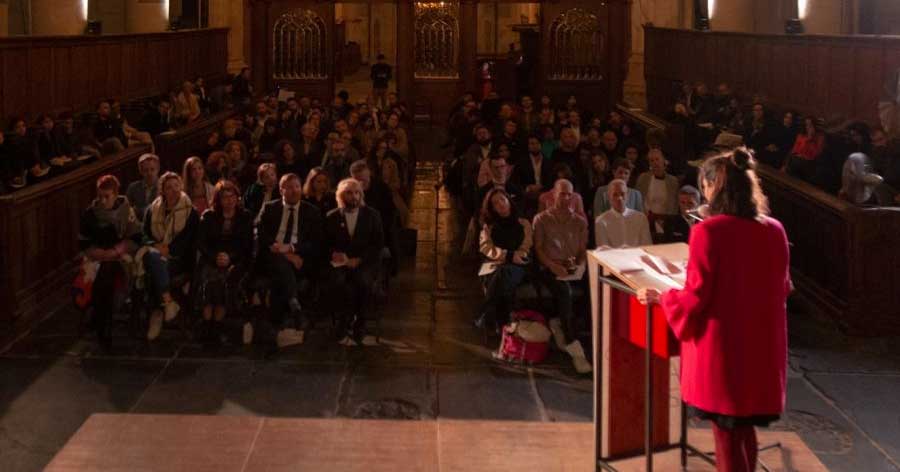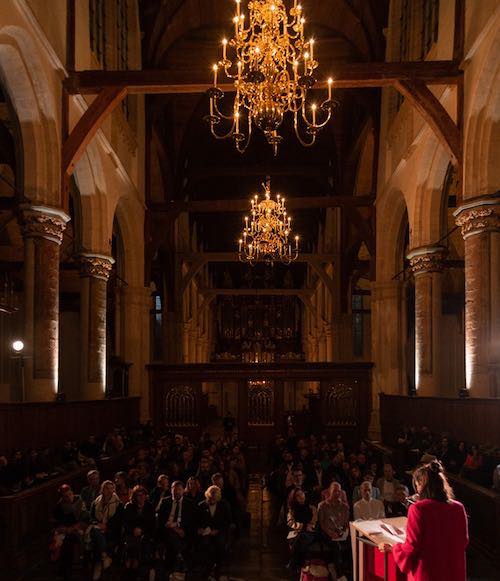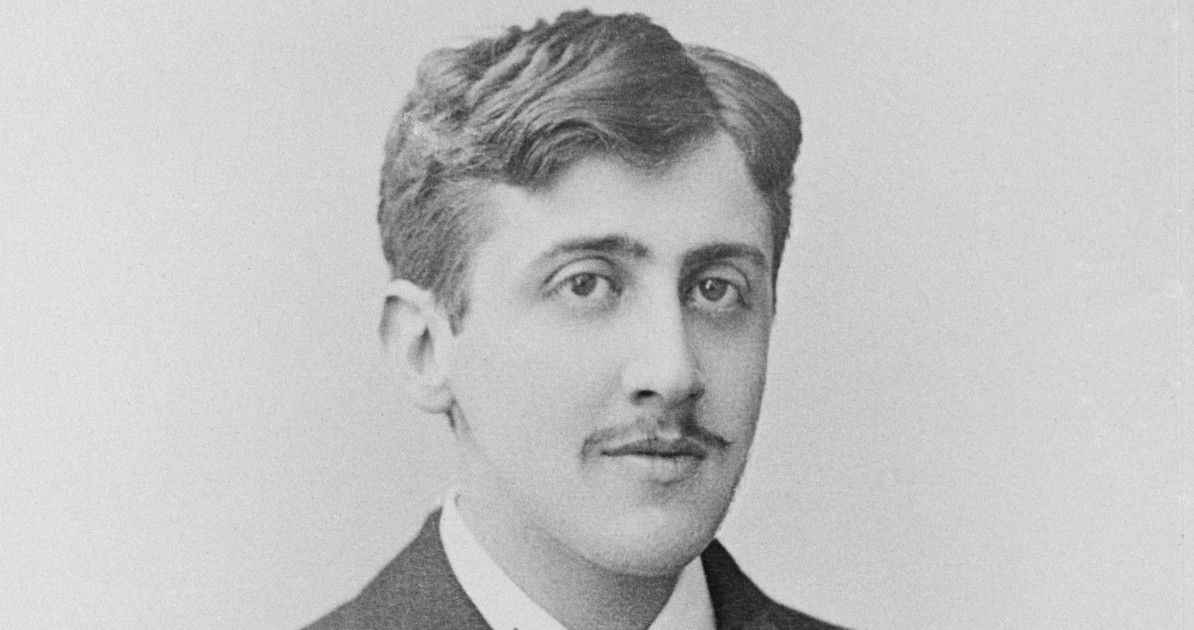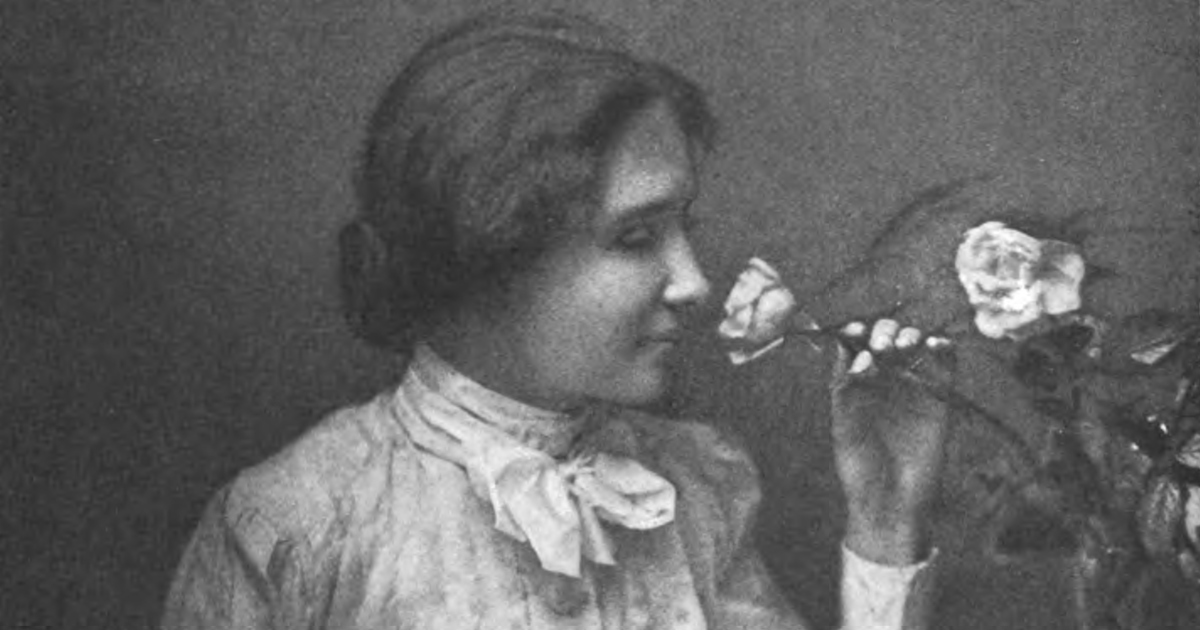Cette publication est également disponible en :
![]() Français
Français
Recited at the Oude Kerk by Caro Verbeek, in Amsterdam, on May 19th 2019, during the annual Art & Olfaction Awards, surrounded by the scent of roses.
«I can sniff out the truth»
Such a strong and evocative sentence. Although it sounds like something a contemporary artist (like Peter de Cupere or Sissel Tolaas) could have said, these are the exact words of one of the most influential philosophers of the modern era. Friedrich Nietzsche (1844 – 1900).
The explanation for his statement was twofold.
In the first place the philosopher referred to the so called miasma theory: before the discovery of biologist Pasteur that viruses and microbes spread diseases, people used to believe stench could transmit diseases. The aroma someone exhaled conveyed a lot of information on a person’s condition.
Secondly, and more importantly, Nietzsche – who was quite rebellious – responded to a dominant belief among Enlightenment thinkers that smell (and the other so-called lower senses, taste and touch) could never lead to aesthetic experience or knowledge like sight and hearing could, because these senses don’t allow for contemplation. Nietzsche however was a firm advocate of intuition as the supreme provider of knowledge, not opposed to but encompassing intellect and ratio. Smelling and intuition were highly intertwined concepts at this time (in many languages there is only one word for the two notions, such as flair in French and fiuto in Italian).
A contemporary of Nietzsche was also convinced that without the senses, and I mean all of them, there was no way of understanding the world.
I am talking about the famous education specialist Maria Montessori (1870 – 1952).
Montessori stated that without training the senses the world be unknowable to mankind. Even moral judgment would be impossible. Without sensory perception, it is after all impossible to understand the relationship between words and objects, between our inner and external existence. She made her young students touch, smell and taste and even weigh objects and relate their findings to vocabulary and to emotions.
These two iconic figures – Nietzsche and Montessori – weren’t even the firsts – to support the thought that sensing, and smelling in particular could lead to profound knowledge.
And one of them comes from an entirely different unexpected field. Namely from religion.
Hildegard von Bingen was a 12th century, highly respected and well-known mystic, even though she was a woman. She was able to read and write and considered an intellectual. In fact, besides being a mystic this German Benedictine Abbess was a writer, composer, philosopher and visionary. Although retrospectively one might rather say ‘olfactionary’.
One of her most striking thoughts was, and I quote:
«By our nose God displays the wisdom that lies like a fragrant sense of order in all works of art, just as we ought to know through our ability to smell whatever wisdom has to arrange»
One of the olfactory phenomena she was referring to was the so-called ‘odour of sanctity’, an invisible aura exuded by saints thought to have a pure soul, obtained by prayer and asceticism (not eating and drinking). This odour was an earthly expression of a divine characteristic and a sign sent by god, following the theological principle that everything earthly (or satanic) smelled foul, whereas everything divine was fragrant.
The most famous saint who died in an odour of sanctity was Teresa d’ Avila, best known for the sculpture Bernini created hundreds of years later, capturing one of her visions in stone, with an eternal orgasmic expression on her face (more on that tomorrow during Odorama, Scent from Heaven).
The moment she died her bedside attendants said the room filled with the scent of roses that grew to saturate the building. The convent smelt like it had erupted into bloom and cascades of invisible blossoms poured from the windows. Her grave held the scent of roses for eight months as scent expert Nuri McBride wrote so eloquently. And everyone knew and felt, just by inhaling, that Teresa was a Saint of the highest order.
Some 600 years after Hildegard von Bingen’s era, scents weren’t only considered the highest manifestations of divine presence, learning from smells could even save lives here on earth.
Alain Corbin reconstructed the social history of 18th century France through the perspective of the nose, or with an olfactory gaze. Physicians and medics and other professionals at the time were employed by the city to detect, describe and eliminate the foul and dangerous smells of the French capital to safeguard public health. This means that these professionals entertained a vast and more or less objective olfactory vocabulary.
The reason I mention all these historical examples is because:
- a apparent lack of olfactory vocabulary,
- smell’s supposedly historical insignificant role in society,
- the subjective nature of smell,
- olfaction’s low position in the classical hierarchy of the senses and subsequently ,
- olfaction’s absence in historical philosophical and aesthetic debate,
are often mentioned in the opening sentences of articles as reasons for the suppression, underestimation or even seclusion of the sense of smell in art and science. We retrospectively seem to think that smell has always been treated this way, that we never had any words to describe what we smell, and was always ranked as one of the lowest senses.
If we keep communicating about the sense of smell this way, we are – perhaps unintentionally – actually emphasizing and helping sustain olfaction’s inferior position.
Institutions such as the Institute for Art and Olfaction, artists, scholars, critics, scientists and curators have put the sense of smell on the map.
It wouldn’t be exaggerated to speak of an olfactory renaissance.
But this renaissance is a relative one. Because it is still often taking place in encapsulated spaces and communities.
When we talk about a ‘rebirth’ (the actual meaning of ‘renaissance’), this presupposes there has been an era in which olfaction was celebrated before. And we now know it was.
If – with this historical knowledge in mind – we advocate the sense of smell as something that has been held in high regard throughout the ages by doctors, mystics, educationalists, philosophers, artists and society at large it would be much easier to elevate the status of olfaction among the people who are still oblivious of smell’s agency and capacity.
I would like to do a few modest suggestions to possibly obtain that:
- To all scholars (including myself): stop using the word ‘lower’ as an adjective for the sense of smell, taste and touch, and speak of ‘intimate’ or ‘proximate’ senses instead.
- To art historians: stop using the adjective ‘olfactory’ in ‘olfactory art’ in the long run and participate in symposiums that don’t revolve around the sense of smell as to grow awareness among those that aren’t familiar with the subject.
- To chemists, curators and conservators: let’s set up a course and guidelines for how to use smell in museums of fine art and take away the fear of smell among museum professionals.
- to all artists and perfumers: keep doing what you do! You are the vehicle of a revolution.
- To everyone: emphasize that smell WAS NOT excluded from art, society at large, religion and philosophy, but a fundamental part of it.
That way olfaction can finally be included as a fundamental and self-evident part of the history of art.
In the meantime: let’s inhale and exhale knowledge, let’s restore the fragrant sense of order, let’s sniff out the truth today.
UN SOFT MANIFESTO PER LA CULTURA DELL’OLFATTO
Pronunciato all’Oude Kerk di Amsterdam il 2 maggio 2019 per l’annuale Art & Olfaction Awards, ambientato in un profumo di rose.
« Tutto il mio genio è nel mio naso »
È una frase forte ed evocativa. Avremmo potuto attribuirla ad un artista contemporaneo, come Peter de Cupere o Sissel Tolaas. Invece sono le parole di Friedrich Nietzsche (1844 – 1900), uno dei filosofi più noti dell’età moderna.
L’affermazione di Nietzsche si fa spiegare in due modi.
In primo luogo il filosofo si riferiva alla cosiddetta teoria del miasma. Prima della scoperta del biologo Pasteur che le malattie vengono diffuse da virus e microbi, si pensava che fossero trasportate da puzze: gli odori emanati dal corpo umano trasmettevano informazioni sulle condizioni di una persona.
In secondo luogo, e ben più importante, il ribelle Nietzsche respingeva l’idea dominante tra i filosofi dell’Illuminismo che l’olfatto – come gli altri cosiddetti sensi inferiori, gusto e tatto – non consente alcuna forma di contemplazione, e che non può condurre ad un sapere o un’esperienza estetica come la vista e l’udito. Nietzsche favoriva l’intuizione come suprema fonte di conoscenza: non in opposizione all’intelletto e la ragione, ma come contenitore di quest’ultimi. In quel periodo, olfatto e intuizione erano concettualmente intrecciati: non è per caso che in molte lingue questi concetti si esprimono con una sola parola (si pensi a flair in francese e fiuto in italiano).
Una contemporanea di Nietzsche era convinta che senza i sensi – e intendo tutti i sensi – non c’era modo di capire il mondo.
Mi riferisco alla famosa psicologa dell’educazione Maria Montessori (1870 – 1952).
Montessori affermò che il mondo è inconoscibile per gli esseri umani se non attraverso i sensi. Perfino il giudizio morale diventa impossibile. Senza la percezione sensoriale è impossibile comprendere la relazione tra parole e oggetti, tra la nostra esistenza interiore ed esteriore. La Montessori incitava i suoi giovani studenti a toccare, annusare, assaggiare e persino pesare oggetti, e a tradurre le loro esperienze in parole ed emozioni.
Questi due personaggi iconici, Nietzsche e Montessori, non erano i primi a sostenere l’idea che la percezione sensoriale – e l’olfatto in particolare – potessero indurre a una forma di conoscenza profonda.
Uno dei loro predecessori proviene da un campo completamente diverso e inaspettato, vale a dire la religione.
Hildegard von Bingen era una mistica del 12° secolo, molto rispettata e ben nota benché fosse donna. La badessa benedettina tedesca era in grado di leggere e scrivere, ed era considerata un’intellettuale: era scrittrice, compositrice, filosofa e visionaria. Forse faremmo meglio a chiamarla ‘olfattoria’.
Ecco uno dei suoi pensieri più marcati:
« Attraverso il naso Dio ci mostra la saggezza nelle opere d’arte come un fragrante senso d’ordine, così come dovremmo conoscere attraverso la nostra capacità di annusare qualsiasi cosa messa in ordine dalla saggezza »
Uno dei fenomeni olfattivi a cui si riferiva è il cosiddetto ‘odore di santità’: un’aura invisibile trasmessa da santi dall’anima pura, frutto di preghiere e ascetismo (astinenza di cibi e bibite). Quest’odore era l’espressione terrestre di un carattere divino, il segno di Dio: rispecchia quel principio teologico che attribuisce le puzze al mondo terrestre (o satanico), e le fragranze al mondo divino.
La persona più famosa a morire avvolta dall’odore di santità fu Teresa d’Avila. Divenne nota per la sua celebre scultura, creata dal Bernini alcune centinaia d’anni dopo: egli catturò una delle sue visioni in pietra, cogliendo l’eterna espressione orgasmica sul suo viso (ne parlerò più tardi durante Odorama, Scent from Heaven).
I suoi assistenti al letto ricordavano che nel momento in cui Teresa morì, la stanza si riempiva di un profumo di rose che si amplificava fino a saturare l’edificio. Il convento odorava di infiorate; come se cascate di fiori invisibili si riversassero dalle finestre. La tomba emanava un profumo di rose per otto mesi: bastava inalare l’odore per sapere che Teresa era una santa di primo ordine.
Circa 600 anni dopo Hildegard von Bingen, i profumi erano le più alte manifestazioni della presenza divina, e non solo: la conoscenza degli odori poteva salvare vite terrestri.
Nella sua ricostruzione della storia sociale della Francia del XVIIIo secolo, Alain Corbin usa la prospettiva del naso, o uno sguardo olfattivo. Racconta come medici ed altri professionisti dell’epoca erano impiegati dalla città per rilevare, descrivere ed eliminare i cattivi odori della capitale francese per salvaguardare la salute pubblica. Facevano uso di un vasto vocabolario olfattivo dall’aria positivista.
Il motivo per cui menziono tutti questi esempi storici è perché :
- l’apparente mancanza di un vocabolario olfattivo ,
- l’attribuzione limitata del ruolo dell’olfatto nella nostra società,
- il carattere soggettivo dell’olfatto,
- la scarsa importanza dell’olfatto nella gerarchia classica dei sensi, e
- l’assenza dell’olfatto nel dibattito storico, filosofico ed estetico
sono spesso citati nelle introduzioni di articoli di ricerca come motivi o cause della soppressione, la sottovalutazione o anche l’isolamento dell’olfatto nell’arte e nella scienza. Molti credono che l’olfatto sia sempre stato trattato in questo modo; che non abbiamo mai avuto parole per descrivere ciò che odoriamo; e che l’olfatto è da sempre considerato come uno dei sensi più bassi.
Se continuiamo a trattare dell’olfatto in questo modo, non facciamo altro che sottolineare e sostenere, involontariamente o meno, la posizione inferiore dell’olfatto.
Organizzazioni quali l’Istituto d’Arte e Olfatto (Institute for Art and Olfaction), ma anche artisti, studiosi, critici, scienziati e curatori hanno messo l’olfatto in evidenza.
Non sarebbe esagerato parlare di una rinascita olfattiva.
Pertanto si tratta di un rinascimento relativo, confinato in spazi e comunità racchiuse.
Parlare di ‘rinascimento’ nel suo significato originale suppone che ci sia stata un’epoca in cui si celebrava l’olfatto. Adesso sappiamo che era proprio così.
Se – con questo dato storico in mente – proponiamo l’olfatto come elemento importante nel corso dei secoli nelle vite di medici, mistici, pedagogisti, filosofi, artisti e società in generale, diventa più facile promuovere la cultura degli odori tra coloro che sono ancora ignari delle loro implicazioni e potenzialità.
Vorrei dunque fare alcuni modesti suggerimenti a questi fini :
- Agli studiosi in generale (inclusa me stessa): finiamola di usare l’aggettivo ‘inferiore’ per i sensi dell’olfatto, del gusto e del tatto, e parliamo invece di sensi ‘intimi’ o ‘prossimi’ .
- Agli storici dell’arte: smettiamola, a lungo termine, di usare l’aggettivo ‘olfattivo’ in ‘arte olfattiva’, e partecipiamo a colloqui e simposi al di fuori della cultura dell’olfatto per far crescere una nuova consapevolezza tra coloro che non hanno familiarità con gli odori.
- Ai chimici, ai curatori e ai conservatori: sviluppiamo un corso e delle linee guida su come usare l’olfatto nei musei delle belle arti, e familiarizziamo i professionisti museali con gli odori.
- Agli artisti e i profumieri: continuate così! Siete i veicoli di una rivoluzione .
- A tutti: ricordiamoci che l’odore NON è mai esistito al di fuori dell’arte, della società in generale, della religione e della filosofia; al contrario, è una parte fondamentale di esse.
In questo modo l’olfatto può essere finalmente incluso come elemento evidente e fondamentale della storia dell’arte.
Nel frattempo: inspiriamo ed espiriamo conoscenza, ripristiniamo il fragrante senso dell’ordine, annusiamo oggi la verità.
Traduzione italiana di Marcello Aspria







Comments